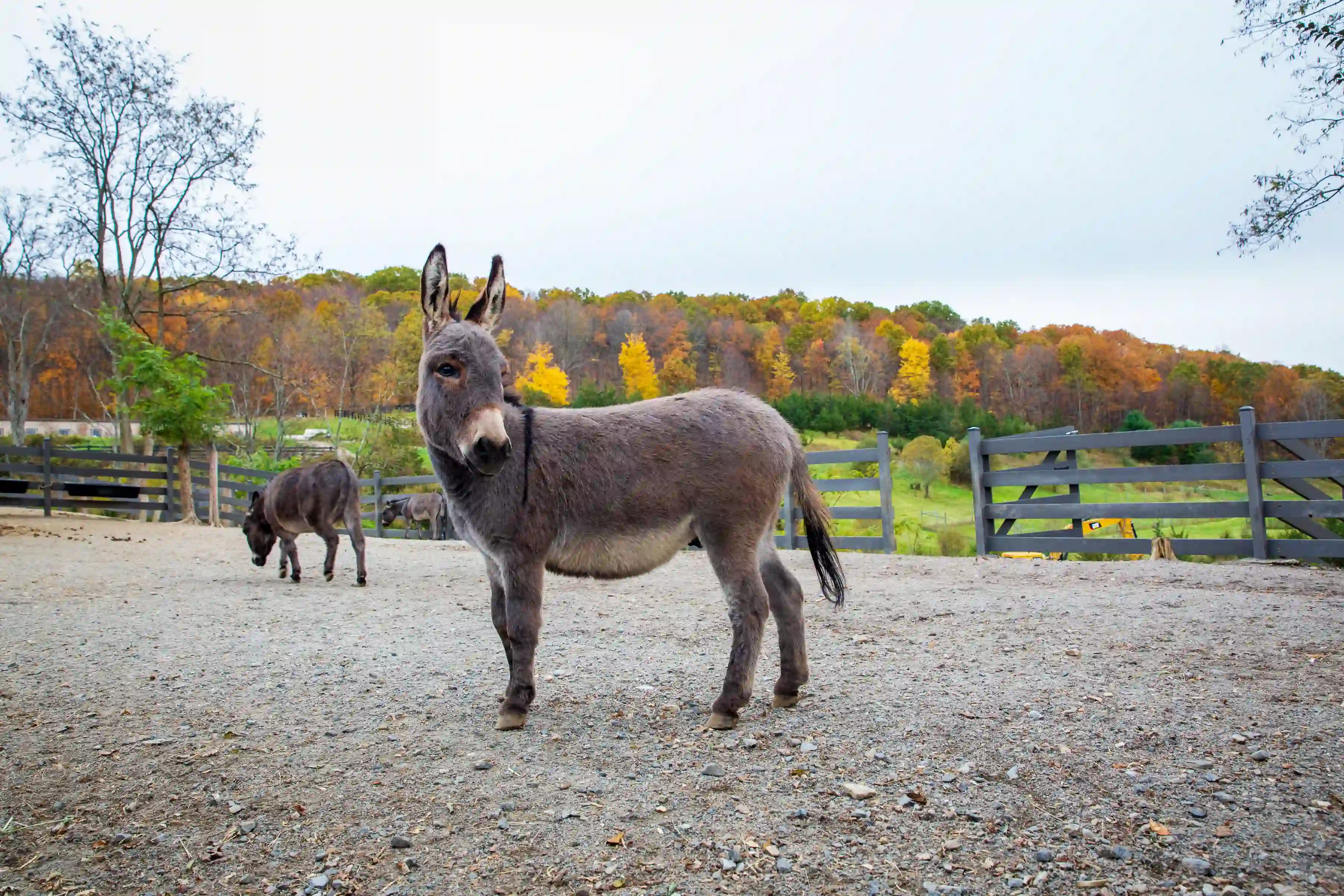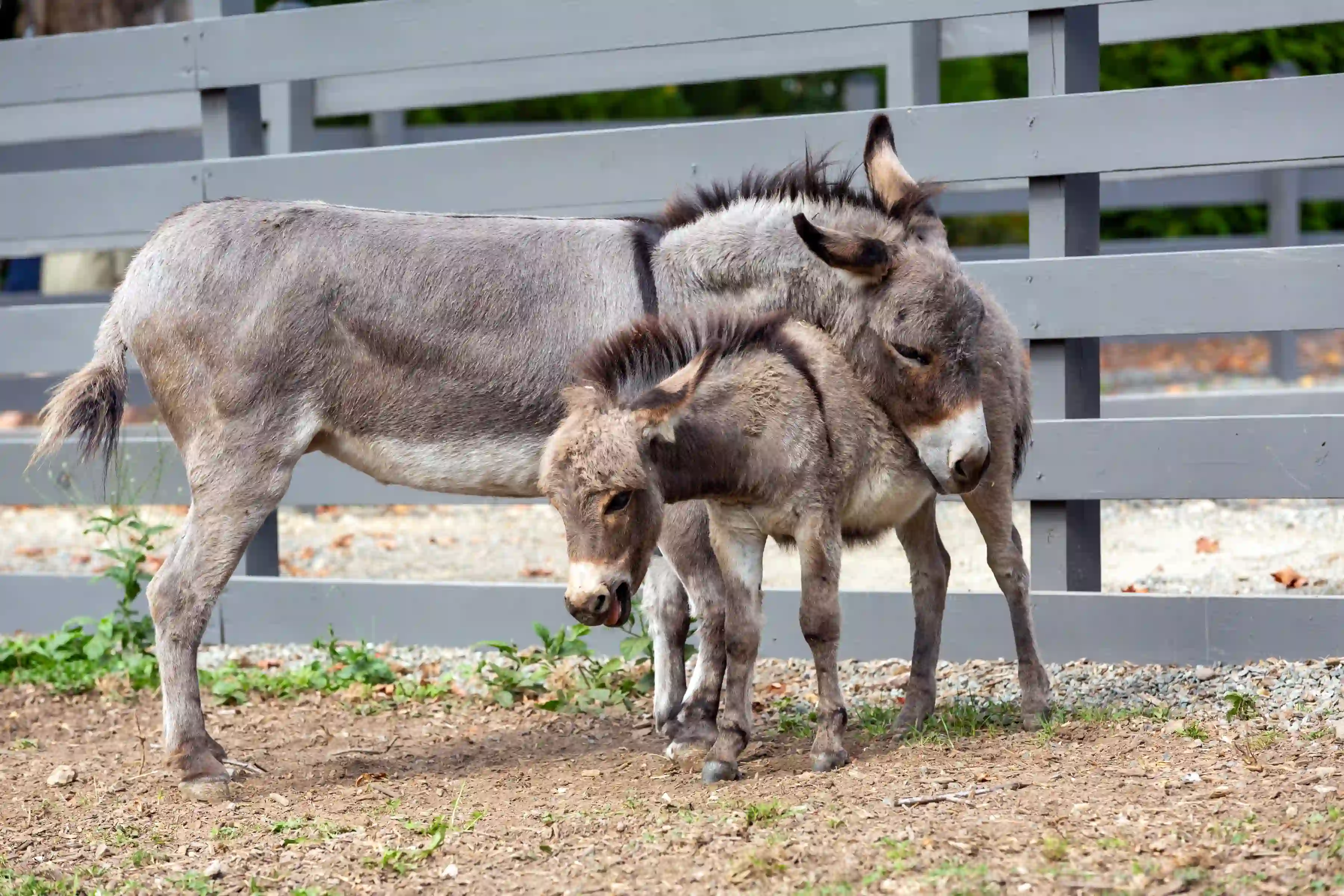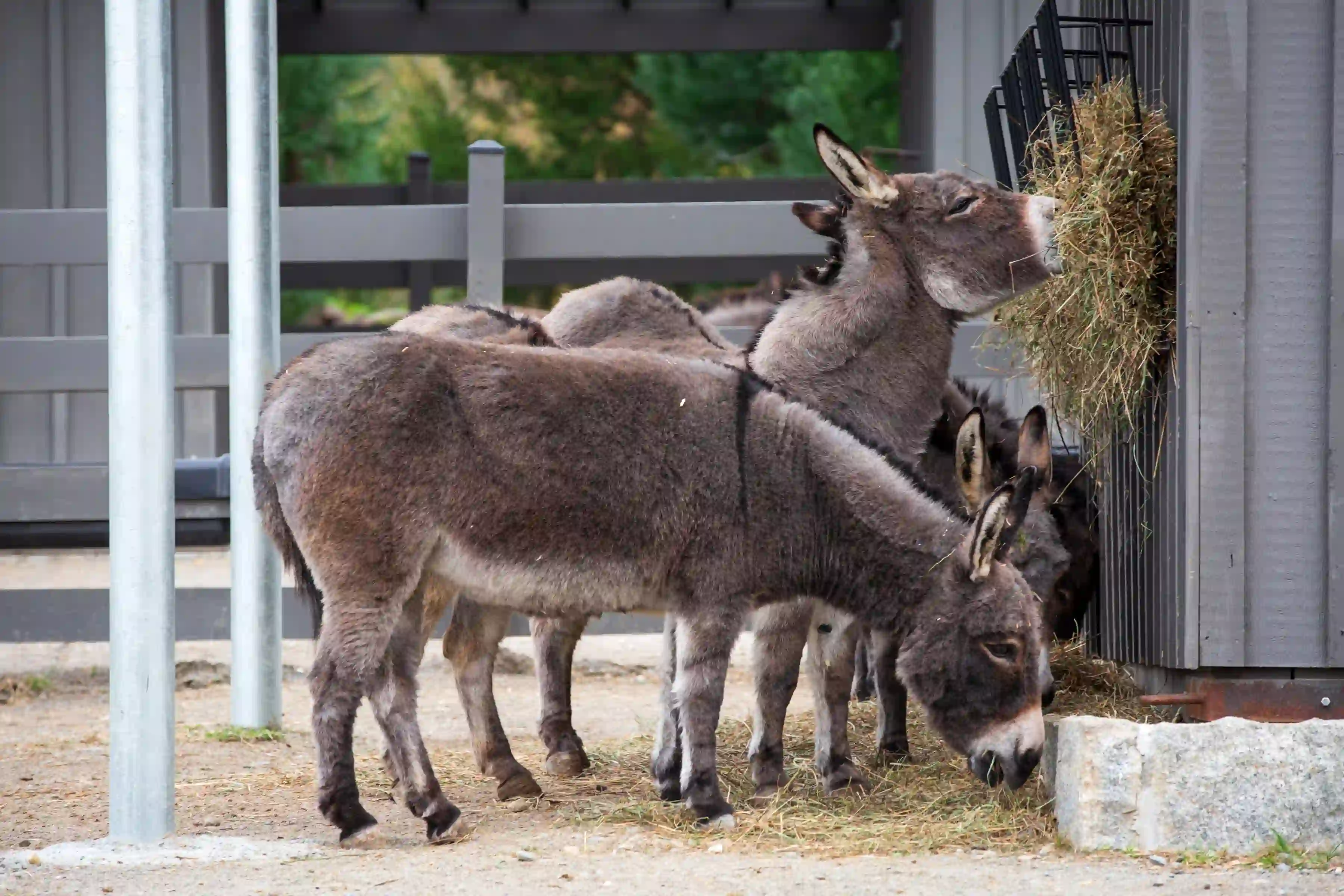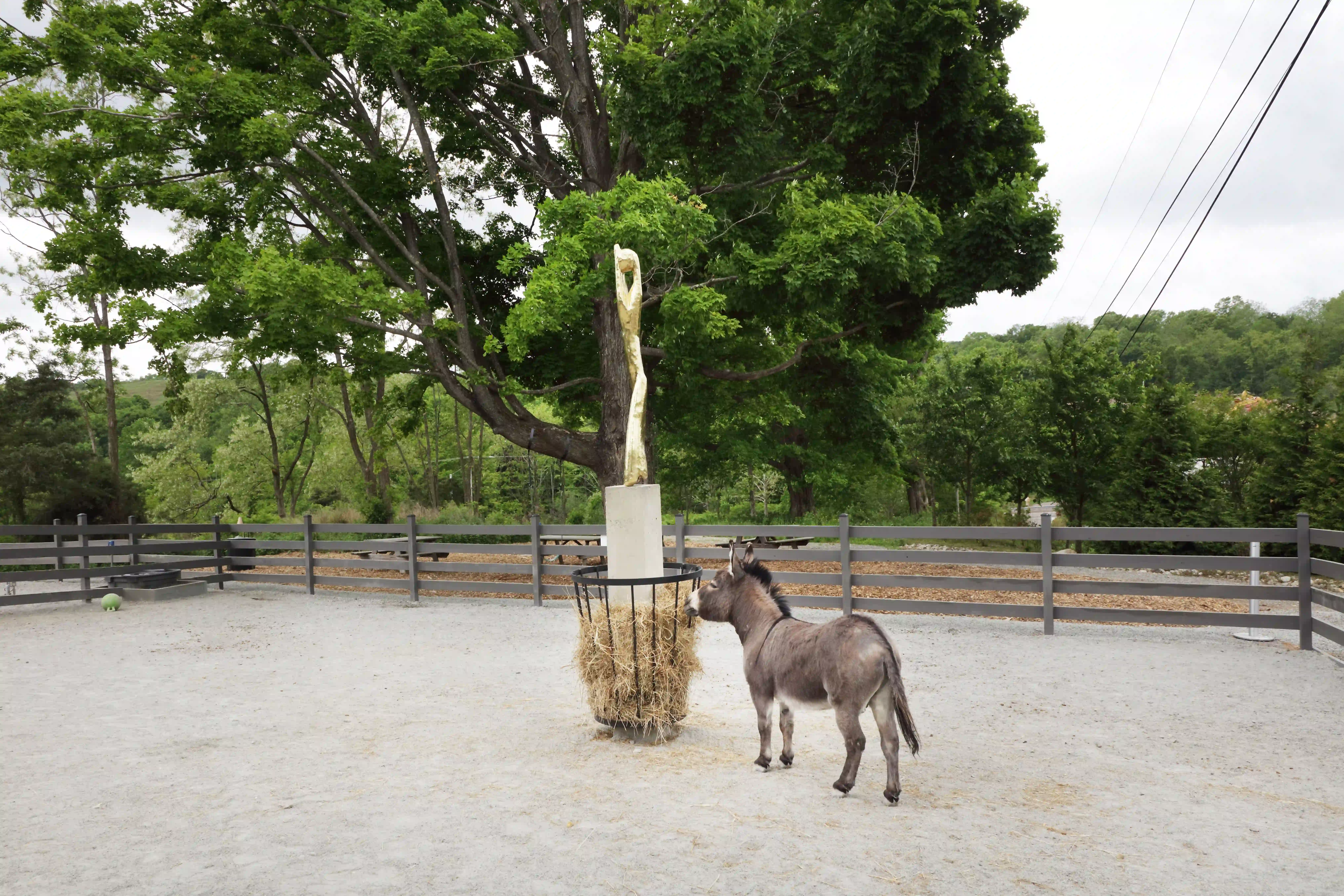Magazzino Italian Art remains committed to cultivating not only a cultural understanding of its Arte Povera collection but an appreciation of the Hudson Valley’s natural beauty. However, the most popular stop for visitors while exploring our grounds is not the fresh lavender or crab apple trees, but rather another Italian import: our Sardinian donkeys!


In 2017, months after the opening of Magazzino, four donkeys arrived at their new home at the stables on the hilltop of Magazzino’s grounds. The original herd included four donkeys, with one male, Dino, and four females. We have gladly welcomed four babies, with Destiny being the first, followed by Max, Dolly, and Dolce. Sardinian donkeys are classified as an endangered species, and it is with excitement that our dwelling has grown to include as many as 15 donkeys.


In their first months of life, Sardinian donkeys are more playful, engaging with toys and balls (which you will see in their corral), but as they get older they are more reserved, described to have a stoic personality. Our donkeys are primarily found grazing, braying, and resting inside their dwelling space, sustained on hay, food pellets, and salt blocks provided by our grounds team. The coat of the Sardinian donkey is unique, with a distinctive cross pattern on their back. In the winter, their coats will thicken as the weather grows colder, giving them a natural fluffiness with the change of season.
With the addition of more donkeys came the expansion of the corral space, which has undergone several restructurings. In 2021, a commissioned sculpture joined the herd, Namsal Siedlecki’s Trevis Maponos, an installation featuring a concrete base and hay feeder.


Sardinian donkeys hail from the same Italian island as Magazzino’s Co-founder, Giorgio Spanu, and with them comes a playful nature and unique sense of community for visitors and staff. Since the Sardinian donkeys’ arrival as a permanent fixture of Magazzino, they have developed into an irreplaceable facet and a sort of mascot for the museum and team.
